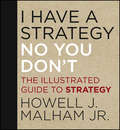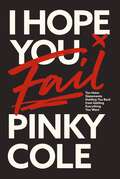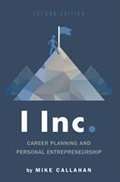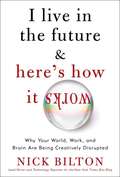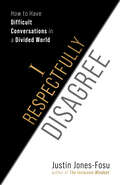- Table View
- List View
I Hate to Complain, But...
by Jim FosterIt is rare that one can pick up a book and find all the answers to the problems of Life. Yet in this one book, we find these answers, and learn a few more things that will keep us up at night. What really happened when Mike Harris woke up after emergency surgery in a hospital still smarting from budget cuts? Why did Linda Tripp turn on Bill Clinton? How many people knew that after the Manhattan Project, the world’s leading scientists gathered at Jane Russell’s house to devise the strapless bra?This is a book for everyone: it’s an exercise program for the not-too-ambitious senior, a step-by-step guide for the teenage lad on his first date, an advice column for the young spinster who, at the ripe old age of 22, is still trying to find a first-class man.We listen in as two American broadcasters cover the Olympic Games as only Americans can.We learn that even the big guns at the TSE were unaware of the biggest corporate takeover in history when S Claus Corp seized control of its philanthropic rival, EasterBunCo.Yet, for all its humour, the book still brings us close to tears as the author reveals the tragedy of his thirty-year love affair with Sophia Loren.If Shakespeare were alive today, he would read this book?
I Have Something to Say: Mastering the Art of Public Speaking in an Age of Disconnection
by John BoweA veteran journalist discovers an ancient system of speech techniques for overcoming the fear of public speaking—and reveals how they can profoundly change our lives.In 2010, award-winning journalist John Bowe learned that his cousin Bill, a longtime extreme recluse living in his parents&’ basement, had, at the age of fifty-nine, overcome a lifetime of shyness and isolation—and gotten happily married. Bill credited his turnaround to Toastmasters, the world's largest organization devoted to teaching the art of public speaking.Fascinated by the possibility that speech training could foster the kind of psychological well-being more commonly sought through psychiatric treatment, and intrigued by the notion that words can serve as medicine, Bowe set out to discover the origins of speech training—and to learn for himself how to speak better in public.From the birth of democracy in Ancient Greece until two centuries ago, education meant, in addition to reading and writing, years of learning specific, easily taught language techniques for interacting with others. Nowadays, absent such education, the average American speaks 16,000 to 20,000 words every day, but 74 percent of us suffer from speech anxiety. As he joins Toastmasters and learns, step-by-step, to successfully overcome his own speech anxiety, Bowe muses upon our record levels of loneliness, social isolation, and political divisiveness. What would it mean for Americans to learn once again the simple art of talking to one another?Bowe shows that learning to speak in public means more than giving a decent speech without nervousness (or a total meltdown). Learning to connect with others bestows upon us an enhanced sense of freedom, power, and belonging.
I Have a Strategy (No, You Don't): The Illustrated Guide to Strategy
by Howell J. Malham Jr.A smart and witty take on strategy . . . an essential business topic Every day, millions of professionals around the world discuss strategy, and they assume that everyone else in the room defines "strategy" the same way. But they don't. Howell J. Malham Jr. has created a simply designed and illustrated book that goes straight to the heart of the issue. Through the largely facetious dialog of two line drawn colorful characters, this clever, irreverent book seeks to get everyone in the room on the same page using the same definitions for the same words. This is a crucial first step to any business proposition, yet it is often the most overlooked. An open and visual book that defines the most over-used (and least understood) business term: strategy Author is the co-founder of Insight Labs Produced in a wry style, this book offers a witty, inventive take on a common business problem At a time when business in general is groping in the dark for new solutions to persistent problems, this book is a breath of fresh air, reminding readers that they have to build a foundation before they can scale the walls.
I Hear She's a Real Bitch
by Jen Agg“A terrific, beautifully written, frank, and funny memoir, and a compelling argument for pulling down the long outdated system of ‘bro’ culture that has dominated the industry since what feels like the beginning of time.” —Anthony BourdainFrom the moment she opened her first bar, Jen Agg knew she could only be her own boss from then on. I Hear She’s a Real Bitch tells the story of how she fought her way through the patriarchal service industry and made it happen, from getting her first job pouring drinks all the way to starting Toronto’s culinary revival and running some of Canada’s most famous restaurants. And she shares what she learned through years of hard work and learning from her mistakes: how to run a great restaurant that’s also a great business. Readers who loved Gabrielle Hamilton’s bestselling Blood, Bones, and Butter will devour this raw, uninhibited debut. Studded with Agg’s frank and often hilarious observations on an industry in which sexism has been normalized, I Hear She’s a Real Bitch is more than just a story about starting a restaurant: it is a rallying cry for a feminist revolution in the culinary world.
I Hear You: Repair Communication Breakdowns, Negotiate Successfully, and Build Consensus . . . in Three Simple Steps
by Donny EbensteinBirth, death, and conflict--three things you truly can't avoid. Whether it's big or small, conflict eats into productivity and makes people feel stuck. Yet solutions exist for even the toughest situations with the most intractable people. The answer lies in better communication--not just using different words, but rather learning to think differently. I Hear You supplies proven techniques for stepping outside one's point of view and seeing things from other perspectives. Sample dialogues show how this shift in thinking leads to better conversations and greatly improved outcomes. Readers learn how to: * Tell the other person's story--the cornerstone of real engagement * Look from the outside in and see themselves as others do * Recognize the role systemic factors play--and transform a conflict into a shared challenge * Overcome the defense mechanisms that derail dialogue For anyone trying to negotiate a difficult situation with a boss, colleague, employee, or client, I Hear You changes opposition into understanding and mere talk into real trust.
I Heart My Life: Discover Your Purpose, Transform Your Mindset, and Create Success Beyond Your Dreams
by Emily WilliamsWritten by entrepreneurial phenomenon Emily Williams, I Heart My Life is a guidebook for women to change their money mindset, get clarity on what they want and start living the life of their dreams.I Heart My Life is a guide for living life in a different way to everyone else--going for your desires and no longer letting doubt, shame, insecurity or other people's judgment stop you from moving forward with that "something big" you know you're meant for. It brings together mindset, money beliefs, success principles, vulnerability, and real-life stories of women who have made their career and life dreams come true.Emily Williams once couldn't even get a job at Starbucks. Yet she went on to move to a new country, clear $30k in credit card debt and build a seven-figure coaching business from scratch. Having worked for years with thousands of women around the world to release what holds them back from the success they want, Emily is now sharing all her most powerful tools to help women radically transform their lives.In this book, you'll discover how to: * cultivate a success mindset and trust the intelligence within your heart * become clear about what you really want--then, go after it * embrace gratitude as a driver for your ambition and success * get big results and handle things when they don't go as planned * be consistent, persistent and confident on the path towards your dreamsWhether you're dreaming of starting your own business, getting ahead in your career, or just experience more joy, adventure and fulfilment in your life, I Heart My Life will catapult you toward your greatest desires.
I Hope This Email Finds You Never: A Complete Guide to Blissfully Surviving the Modern Workplace
by Ken Kupchik Emily Ann HillAhhh, the modern workplace: a cauldron of stress and anxiety. From the moment we accept a new role, we&’re thrown into a world of competing personalities, shifting protocols, and an endless stream of emails, Slack messages, and Zoom calls, all of which serve to distract us from the things we truly want to be doing, like eating Thai food and sleeping until noon.I Hope This Email Finds You Never puts aside the motivational screeds, productivity hacks, and pop-science, and focuses instead on those things in the workplace that truly cause us grief—like a coworker eating an apple during a video call—in a lighthearted, entertaining, and (most importantly) cynical way.Some things you&’ll learn:How long you can get away with being &“new&” until you&’re held accountableHow to make it look like you&’re sorry without giving up any powerHow to find a workplace friend and make a workplace enemy Camera position: how to set up your laptop for maximum dominanceOrganizing your calendar while leaving time to cryThe rules of the kitchen (stealing someone&’s yogurt is literally a crime)Writing a letter of resignation when you&’ve already been resigned from day one From Orientation (The Descent), Workplace Etiquette (No Eye Contact Before 11 AM), Working Remotely (Wink Wink), Coworkers (Getting Along with your fellow inmates), and everything in between, I Hope This Email Finds You Never is your must-have guide to surviving (thriving is not realistic) in the modern workplace.
I Hope You Fail: Ten Hater Statements Holding You Back from Getting Everything You Want
by Pinky ColePinky Cole—founder of the wildly successful restaurant chain Slutty Vegan—takes you back to your moments that seemed hopeless to help you discover how filled with possibility they really were.We've all been told we can't do it. That we're not enough. That we grew up in the wrong neighborhood or had the wrong parents or made the wrong choices. That we can't be anything but a failure. . .What they don't tell you is that every obstacle and mess-up in your life has only prepared you for success.Pinky has spent her life dreaming of financial security. After a fire destroyed the New York City restaurant she put everything into building, she was back to square one, working hard for someone else's dream. Her life has been a series of lessons that have given her the tools to build a business that drew the attention of some of the world's top investors.In I Hope You Fail, Pinky tells her own story to empower you in yours. She'll share her ten counter-intuitive hopes for you, including:I hope you don't believe in yourself. . .because the journey to discovering who you truly are is the key to unlocking the life you want.I hope you don't get that raise. . .because money doesn't equal respect, but it can show you how much you are truly valued at work.I hope the customers don't show up. . .so you can have the feedback you need to reevaluate your approach and find one that works.Filled with practical advice and motivational gut-punches, I Hope You Fail will teach you how to learn from your WTF moments and find fuel in your losses.
I Inc: Career Planning And Development Using Proven Entrepreneurship Concepts
by Mike CallahanInc.: Career Planning and Personal Entrepreneurship teaches students how to market themselves effectively in today's competitive professional environment. Students begin to truly understand their personal interests, develop a plan that enables them to market those interests, and then launch their careers. <p><p> Students learn the critical distinction between searching for a job and developing a successful career strategy. They acquire the skills required to become entrepreneurs of their professional lives regardless of where or in what field they may choose to work. <p> While initially developed for students in business programs who are thinking about how to move forward with career choice and planning, I Inc. is a valuable tool for anyone who wants to best pursue their career ambitions. All the material in the text has been successfully class-tested and revisited to enhance the content and resources available to students. <p> The book is an excellent choice for business program courses in career planning and development. Newly applicable to undergraduate and graduate students, is applicable to any student who wants to present their skills and abilities in a way that future employers will truly value and appreciate.
I Just Graduated ... Now What?
by Katherine SchwarzeneggerThe new go-to book of advice for graduates, with insightful advice from: Eva Longoria "Your degree is just a stepping-stone." John Legend "It's not wrong to be afraid." Bear Grylls "The path less traveled always makes for a more interesting journey." Andy Cohen "When I got my first job, I felt like a success." Lauren Bush Lauren "It may take three or four jobs to discover your true career path." Blake Mycoski "When you are good at something, the money always follows." And many more . . . Graduation is a time of tough questions whose answers we don't--and sometimes can't--know the day we receive our diploma. Determined to power through the uncertainty of post-graduation, bestselling author Katherine Schwarzenegger embarked on a yearlong quest to gather the best guidance possible from more than thirty highly successful people working in fields like business, media, fashion, technology, sports, and philanthropy. Along the way, Katherine uncovered the essential and often surprising advice they have for graduates, including answers to questions like: * How do I find my first job in a tough economy? * How do I decide between a career that pays well and one that I'm passionate about? * How do I balance work with friends, relationships, and family? * Should I take a "gap year" before starting my first job? * What should I do about my student loan debt? Drawing on the stories and real-life experiences of contributors such as Anderson Cooper, Eva Longoria, Blake Mycoskie of TOMS shoes, Lauren Bush Lauren, Andy Cohen, Meghan McCain, Gayle King, and more, Katherine has written the must-have guide for recent and soon-to-be graduates as they prepare to seek success and fulfillment in their work, relationships, and lives.From the Hardcover edition.
I Know How She Does It
by Laura VanderkamEveryone has an opinion, anecdote, or horror story about women and work. Now the acclaimed author of What the Most Successful People Do Before Breakfast shows how real working women with families are actually making the most of their time. "Having it all" has become the subject of countless books, articles, debates, and social media commentary, with passions running high in all directions. Many now believe this to be gospel truth: Any woman who wants to advance in a challenging career has to make huge sacrifices. She's unlikely to have a happy marriage, quality time with her kids (assuming she can have kids at all), a social life, hobbies, or even a decent night's sleep. But what if balancing work and family is actually not as hard as it's made out to be? What if all those tragic anecdotes ignore the women who quietly but consistently do just fine with the juggle? Instead of relying on scattered stories, time management expert Laura Vanderkam set out to add hard data to the debate. She collected hour-by-hour time logs from 1,001 days in the lives of women who make at least $100,000 a year. And she found some surprising patterns in how these women spend the 168 hours that every one of us has each week. Overall, these women worked less and slept more than they assumed they did before they started tracking their time. They went jogging or to the gym, played with their children, scheduled date nights with their significant others, and had lunches with friends. They made time for the things that gave them pleasure and meaning, fitting the pieces together like tiles in a mosaic--without adhering to overly rigid schedules that would eliminate flexibility and spontaneity.Vanderkam shares specific strategies that her subjects use to make time for the things that really matter to them. For instance, they . . . * Work split shifts (such as seven hours at work, four off, then another two at night from home). This allows them to see their kids without falling behind professionally. * Get creative about what counts as quality family time. Breakfasts together and morning story time count as much as daily family dinners, and they're often easier to manage. * Take it easy on the housework. You can free up a lot of time by embracing the philosophy of "good enough" and getting help from other members of your household (or a cleaning service). * Guard their leisure time. Full weekend getaways may be rare, but many satisfying hobbies can be done in small bursts of time. An hour of crafting feels better than an hour of reality TV.With examples from hundreds of real women, Vanderkam proves that you don't have to give up on the things you really want. I Know How She Does It will inspire you to build a life that works, one hour at a time.From the Hardcover edition.
I Know How She Does It: How Successful Women Make the Most of Their Time
by Laura VanderkamEveryone has an opinion, anecdote, or horror story about women and work. Now the acclaimed author of What the Most Successful People Do Before Breakfast shows how real working women with families are actually making the most of their time. “Having it all” has become the subject of countless books, articles, debates, and social media commentary, with passions running high in all directions. Many now believe this to be gospel truth: Any woman who wants to advance in a challenging career has to make huge sacrifices. She’s unlikely to have a happy marriage, quality time with her kids (assuming she can have kids at all), a social life, hobbies, or even a decent night’s sleep. But what if balancing work and family is actually not as hard as it’s made out to be? What if all those tragic anecdotes ignore the women who quietly but consistently do just fine with the juggle? Instead of relying on scattered stories, time management expert Laura Vanderkam set out to add hard data to the debate. She collected hour-by-hour time logs from 1,001 days in the lives of women who make at least $100,000 a year. And she found some surprising patterns in how these women spend the 168 hours that every one of us has each week. Overall, these women worked less and slept more than they assumed they did before they started tracking their time. They went jogging or to the gym, played with their children, scheduled date nights with their significant others, and had lunches with friends. They made time for the things that gave them pleasure and meaning, fitting the pieces together like tiles in a mosaic—without adhering to overly rigid schedules that would eliminate flexibility and spontaneity.Vanderkam shares specific strategies that her subjects use to make time for the things that really matter to them. For instance, they . . . * Work split shifts (such as seven hours at work, four off, then another two at night from home). This allows them to see their kids without falling behind professionally. * Get creative about what counts as quality family time. Breakfasts together and morning story time count as much as daily family dinners, and they’re often easier to manage. * Take it easy on the housework. You can free up a lot of time by embracing the philosophy of “good enough” and getting help from other members of your household (or a cleaning service). * Guard their leisure time. Full weekend getaways may be rare, but many satisfying hobbies can be done in small bursts of time. An hour of crafting feels better than an hour of reality TV.With examples from hundreds of real women, Vanderkam proves that you don’t have to give up on the things you really want. I Know How She Does It will inspire you to build a life that works, one hour at a time.
I Know It When I See It
by John GuaspariThe secret to the success of I Know It When I See It lies in its stylish delivery of a serious theme. A succinct and intriguing business fable, it tells the story of "Punctuation, Inc." and provides a simple message about quality -- that it's the customer who defines it. The story shows how businesspeople who pay close attention to what kind of quality their customers want, will also find just what their company wants -- success and big profits.
I Left My Homework in the Hamptons: What I Learned Teaching the Children of the One Percent
by Blythe GrossbergA captivating memoir about tutoring for Manhattan’s elite, revealing how a life of extreme wealth both helps and harms the children of the one percent.Ben orders daily room service while living in a five-star hotel. Olivia collects luxury brand sneakers worn by celebrities. Dakota jets off to Rome when she needs to avoid drama at school.Welcome to the inner circle of New York’s richest families, where academia is an obsession, wealth does nothing to soothe status anxiety and parents will try just about anything to gain a competitive edge in the college admissions rat race.When Blythe Grossberg first started as a tutor and learning specialist, she had no idea what awaited her inside the high-end apartments of Fifth Avenue. Children are expected to be as efficient and driven as CEOs, starting their days with 5:00 a.m. squash practice and ending them with late-night tutoring sessions. Meanwhile, their powerful parents will do anything to secure one of the precious few spots at the Ivy Leagues, whatever the cost to them or their kids.Through stories of the children she tutors that are both funny and shocking, Grossberg shows us the privileged world of America’s wealthiest families and the systems in place that help them stay on top.
I Live in the Future and Here's How It Works: How New Media Is Creatively Disrupting Your World, Work, and Brain
by Nick BiltonExploring how the Internet is creating a new type of consumer, Bilton's book captures the zeitgeist of an emerging age, providing the understanding of how a radically changed media world is influencing human behavior.
I Love Capitalism!: An American Story
by Ken LangoneIconoclastic entrepreneur and New York legend Ken Langone tells the compelling story of how a poor boy from Long Island became one of America's most successful businessmen. <p><p>>Ken Langone has seen it all on his way to a net worth beyond his wildest dreams. A pillar of corporate America for decades, he's a co-founder of Home Depot, a former director of the New York Stock Exchange, and a world-class philanthropist (including $200 million for NYU's Langone Health). <p> In this memoir he finally tells the story of his unlikely rise and controversial career. It's also a passionate defense of the American Dream -- of preserving a country in which any hungry kid can reach the maximum potential of his or her talents and work ethic. <p> In a series of fascinating stories, Langone shows how he struggled to get an education, break into Wall Street, and scramble for an MBA at night while competing with privileged competitors by day. He shares how he learned how to evaluate what a business is worth and apply his street smarts to 8-figure and 9-figure deals . <p>And he's not shy about discussing, for the first time, his epic legal and PR battle with former NY Governor Eliot Spitzer. His ultimate theme is that free enterprise is the key to giving everyone a leg up. <p>As he writes:This book is my love song to capitalism. Capitalism works! And I'm living proof -- it works for everybody. Absolutely anybody is entitled to dream big, and absolutely everybody should dream big. I did. Show me where the silver spoon was in my mouth. I've got to argue profoundly and passionately: I'm the American Dream. <P><b>A New York Times Bestseller</b>
I Love You More Than My Dog
by Jeanne Bliss"I highly recommend reading this book!" -Tony Hsieh, CEO, Zappos.com Lots of businesses are respected, but only an elite few have passionate, loyal, vocal fans. The kind of customers who not only come back time and time again, but rave to friends, family, and even strangers. The kind who can drive explosive growth via e-mail, blogs, Facebook, and Twitter. Jeanne Bliss is an expert on what it takes to earn that kind of customer.Bliss has studied and worked with many beloved companies, from longtime successes like Wegmans and Harley-Davidson to relatively new companies like Zappos and The Container Store. They all make the same five fundamental choices. Their reward: an army of fans who say things like, "I'd marry them if I could," and "I love you more than my dog!"
I Moved Your Cheese: For Those Who Refuse to Live as Mice in Someone Else's Maze
by Deepak MalhotraIf you were a mouse trapped in a maze and someone kept moving the cheese, what would you do? In a world where most mice dutifully accept their circumstances, ask no questions, and keep chasing the cheese, Deepak Malhotra tells an inspiring story about three unique and adventurous mice—Max, Big, and Zed—who refuse to accept their reality as given.I Moved Your Cheese reveals what is possible when we finally discard long-held and widely accepted assumptions about how we should live our lives. After all, achieving extraordinary success, personal or professional, has always depended on the ability to challenge assumptions, reshape the environment, and play by a different set of rules—our own. But rejecting deeply ingrained beliefs is not easy. As Zed explains, "You see, Max, the problem is not that the mouse is in the maze, but that the maze is in the mouse."
I Never Promised You a Goodie Bag: A Memoir of Life Through Events—the Ones You Plan and the Ones You Don't
by Jennifer GilbertA warm, wise, and wholly original memoir of survival, renewal, and transformation, by one of New York City’s most successful and respected special events coordinatorsWith her top-level events company, Save the Date, Jennifer Gilbert has worked with Fortune 500 companies, broadcast media giants, international nonprofit organizations, and celebrities from Oprah Winfrey to Bill Gates and beyond. Yet few of her clients or colleagues have known, until now, that Jennifer not only a self-made success: she’s also a survivor. After a random, near-fatal attack left her body in critical condition on a crowded city street, and left her with emotional wounds that would take years to heal, Jennifer embarked upon a journey to reclaim her life.This is her story, in her own words: I Never Promised You a Goodie Bag, an intimate, poignant, inspiring memoir of perseverance, rediscovery, and hope.
I Paid a Bribe (Dot) Com
by Karthik Ramanna Rachna TahilyaniAnti-corruption web platform "ipaidabribe.com" leverages the transparency and anonymity of the Internet to encourage private citizens in India who have been the victims of corruption to self-report details of bribes paid, including the bribe amount, the name of the corrupt official, and services rendered. The ipaidabribe.com portal then aggregates these data to create maps and charts of corrupt activities across Indian cities. The theory is that such data will build awareness and shame, raising the cost of corruption. But after initial successes-buoyed by visibility generated from mass street protests against corruption in 2011-traffic to the website has slowed. The question before spouses, ex-bankers, and ipaidabribe.com co-founders Ramesh and Swati Ramanathan is how to generate and sustain interest in the web platform so that they have real impact on retail corruption in India. Possible solutions discussed include teaming up with local governments and police, focusing attention on one or two Indian cities, and franchising ipaidabribe.com internationally to create more visibility.
I Regret Almost Everything: A Memoir
by Keith McNallyThe entertaining, irreverent, and surprisingly moving memoir by the visionary restaurateur behind such iconic New York institutions as Balthazar and Pastis. A memoir by the legendary proprietor of Balthazar, Pastis, Minetta Tavern, and Morandi, taking us from his gritty London childhood in the fifties to his serendipitous arrival in New York, where he founded the era-defining establishments the Odeon, Cafe Luxembourg, and Nell&’s. Eloquent and opinionated, Keith McNally writes about the angst of being a child actor, his lack of insights from traveling overland to Kathmandu at nineteen, the instability of his two marriages and family relationships, his devastating stroke, and his Instagram notoriety.
I Respectfully Disagree: How to Have Difficult Conversations in a Divided World
by Justin Jones-Fosu“[This] work is a call not just for leaders to better communicate with their teams but for the everyday person to humanize those they disagree with.” —Cy Wakeman, New York Times–bestselling author of The Reality-Based Rules of the WorkplaceStart building bridges instead of barriers! This essential guide offers a simple five-part framework that will help you have honest and enlightening conversations despite deep and fundamental disagreements.Divisions are on the rise around the world. We're losing the ability to disagree without dehumanizing. There is a deep need for this practical and accessible guide to having challenging conversations in any situation, from the workplace to the classroom to the dinner table.It's not about saying the right words at the right time but something vastly deeper. In this book, you'll discover the five pillars of respectfully disagreeing:Challenge your perspectiveBe the studentCultivate your curiositySeek the grayAgree to respectJustin Jones-Fosu tackles this serious subject with a playful and compassionate tone. With a wide range of examples and exercises throughout, this is a timely and reader-friendly handbook to disagreeing with someone's ideology while passionately pursuing their humanity.“This book is a must-read, particularly for organizational leaders seeking purposeful insights.” —Calvin Banks, Senior Vice President of People Development and Culture, Pyramid Global Hospitality “Justin’s book is an amazing read and should be a staple in any organization’s leadership library. I’m excited to put what I’ve learned from reading this into action!” —Toby Atkinson, National Director of DEI and Management Programs, Cintas
I Should Be Burnt Out By Now... So How Come I'm Not?: How You Can Survive and Thrive in Today's Uncertain World
by Peg Neuhauser Ray Bender Kirk Stromberg"An uplifting ready for anyone with a hectic and stressful life, which is, let's face it, all of us." — Neil Bradford, Managing Director, Forrester North America There has been a great deal of talk during the past two decades about the serious problem of stress and burnout. Most of the discussion focuses on the pessimistic side of the story. The underlying assumption is that we are in a fierce struggle, one that we frequently lose. Burnout is presented as almost inevitable, and solutions focusing on recovery are offered. But there is another, more optimistic side to the story. What about the people who endure tough times with courage and grace, or bounce back from crises with renewed energy when logic tells you the situation should have left them depleted and discouraged? For all the talk about burnout, the fact is that the majority of people spend most of their lives coping amazingly well. Being good at not burning out is a skill more than a genetic personality trait. Just like any skill, you have to work at it. You can learn to manage your behaviour and your thinking, but it takes discipline and practice to do it. There are thousands of success stories every day about people who continue to survive and make the best of tough times. So how do they do it? What are the real stories of how individuals survive and thrive during uncertain and difficult times? And what is their advice on preventing burnout? This book answers these questions.
I Shouldn't Be Telling You This: Success Secrets Every Gutsy Girl Should Know
by Kate WhiteNew York Times bestselling author Kate White is the editor-in-chief of Cosmopolitan, the #1 young women’s magazine in the world, and a hugely successful businesswoman. In I Shouldn’t Be Telling You This, she shares her secrets to success. A witty, wise, straight-talking career guide for women, I Shouldn’t Be Telling You This is the perfect book for the current economic climate, whether you’re just starting out, re-entering the workforce after maternity leave, or simply looking for a career change; essential tips and bold strategies from a gutsy innovator who helped increase Cosmo’s circulation by half a million copies per month.
I Sold My House in a Raffle: A Proven Step-by-Step Method to Get Your Asking Price, Save Money, Save Time, & Help a Charity Too!
by Diane Giraudo McDermottIf you’re a home seller wishing to skip the conventional process of listing your home and waiting for a qualified buyer, and you’ve always wanted to be “rich enough” to help your favorite charity in a big way, your time has come. I Sold My House in a Raffle explains the entire process for homeowners, realtors, and also for the nonprofit director who is open to an innovative fundraising alternative that can provide a sizeable chunk of cash to support the charity. Diane Giraudo McDermott, an advocate of animal rights, couldn’t match the incentives building developers were offering home buyers, and buyers interested in her property couldn’t qualify for a loan; so she used her marketing background and partnered with a “no-kill” animal shelter and successfully sold her house in a raffle. Inside, you’ll learn how to utilize the best marketing techniques, create a winning raffle formula, complete the required paperwork, connect with the right charity, and reduce your risk. Take charge of your real estate future--save thousands of dollars, save time waiting for that qualified buyer, and get your full asking price! This is a method whose time has come, and it can work for you too.


